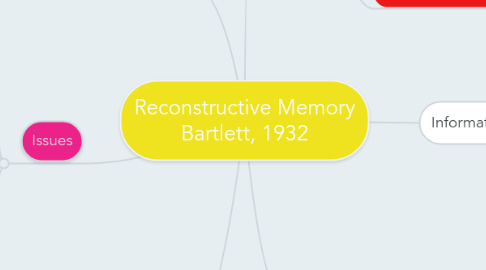
1. Application
1.1. Understanding that memory can be inaccurate and flawed
1.1.1. Highlighted issues with the reliability of eyewitness testimony
2. Issues
2.1. Reductionist
2.1.1. Tulving proposes an additional store later
2.2. Ethics
2.2.1. Lack of confidentiality in case studies
2.2.1.1. HM/Clive Wearing
2.3. May not be generalisable
2.3.1. Use of case studies of impaired brains
2.4. Ethnocentric
2.4.1. Majority of research occurred in the West
3. Research
3.1. Allport & Postman
3.1.1. People reconstructed a story about a white man threatening a black man to the other way around
3.1.1.1. Fitted stereotypical schema of black people in 1940's
3.2. Bower et al
3.2.1. When people read about characters in a restaurant, they later recalled information that had not been in the passage.
3.2.1.1. They were reconstructing the passage based on previous schemas
4. Problems
4.1. Bartlett's experiments to test his theory lacked controls and standardised procedures.
4.1.1. His findings were qualitative as the nature of the information was descriptive.
4.2. Over stated how flawed our memory is
4.2.1. Experiments were designed to trip up participants memories
4.2.1.1. Some distortions may have resulted from conscious guessing rather than gaps in the memory.
5. Information
5.1. Use existing knowledge (schemas) to understand new information
5.2. We reconstruct events according to our previous schemas
5.3. The War of the Ghosts story was used to test Bartlett's theory
6. Theories
6.1. Additional store added to model by Tulving, 1985
6.1.1. Procedural memory for skills we learn (riding a bike)
